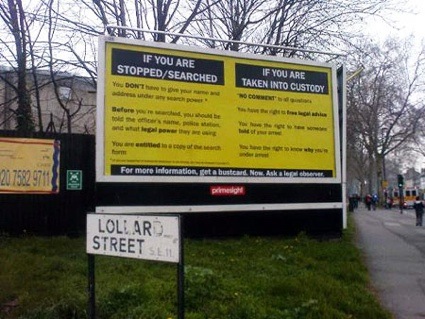Come Together. The Rise of Cooperative Art and Design, by writer, artist and cultural historian Francesco Spampinato
(available on amazon USA and UK.)
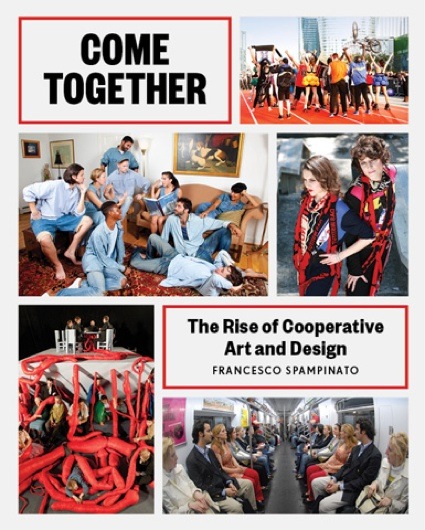
Publisher Princeton Architectural Press writes: The past twenty years have seen a new generation of artists working together in small groups and large collectives to explore new avenues of art, design, performance, and commerce. In Come Together, author and visual artist Francesco Spampinato assembles an international roster of forty of today’s most exciting and influential collectives, from design studios like Project Projects and political performance artists The Yes Men to flash mob provocateurs Improv Everywhere and the multimedia artists Assume Vivid Astro Focus. Alongside visual portfolios of their best work are in-depth interviews addressing each group’s unique motivations, processes, and objectives. What emerges is a shared desire to turn viewers into producers and to use commercial mass-media strategies to challenge prevailing social, political, and cultural power structures. Come Together is an essential resource and inspiration for students, art lovers, and anyone interested in the cutting edge of visual culture.
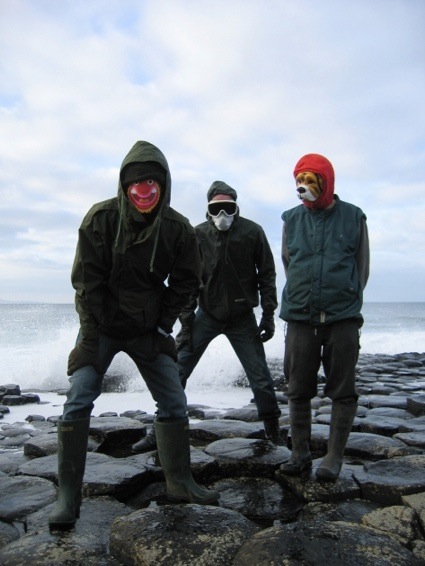 Ivan’s Dogs, We Provide The Smiles, 2006
Ivan’s Dogs, We Provide The Smiles, 2006
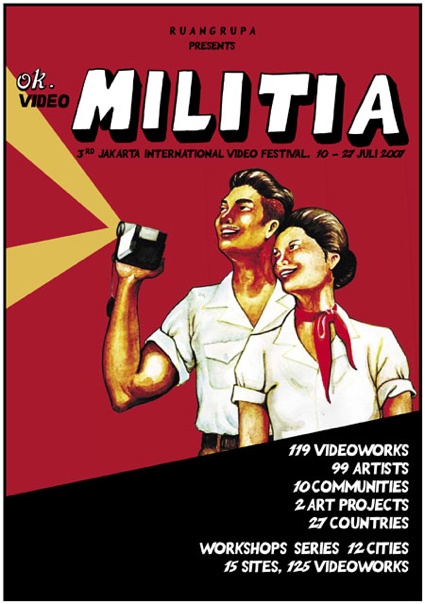 ruangrupa, Poster for the OK. International Video Festival
ruangrupa, Poster for the OK. International Video Festival
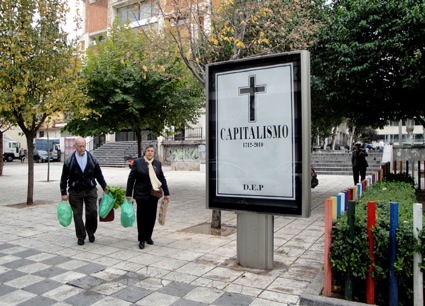 PSJM, Capitalismo 1712-2010, R.I.P
PSJM, Capitalismo 1712-2010, R.I.P
Come Together offers a collection of interviews with dozens of art collectives that work with society, rather than as mere observers of society. The groups selected use graphic design, fashion, performances or publications to question economic structures, brands, mass media, the police and other state institutions. Their strategies and objectives might differ but what brings many of them together is the way they leave a space for the public to take an active role in their actions.
Each collective is given its own chapter in the book. They are introduced by a brief data sheet that includes key words summing up their activities, a list of the members (when known) and a reference to a publication that focuses on their work. But the main content is an interview with the collective. Each of these groups are asked the same questions. They range from “why work collaboratively?” to “Does your engagement with one another translates into an engagement with the public? How so?”
Since i love discovering artists with a political agenda, i’m pretty happy with my copy of Come Together and i can only applaud the fact that the author has looked beyond the usual U.S. and the European Union and included groups from Jakarta, Tokyo, Buenos Aires in his selection. I did however wonder whether an artistic duo that works mostly in a gallery context has indeed its place in the book (i won’t give names, unless you ask politely.)
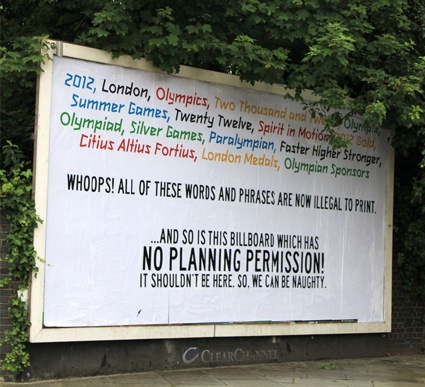 The Space Hijackers comment on the absurdity of the legalese of the Olympics (image via buzzfeed)
The Space Hijackers comment on the absurdity of the legalese of the Olympics (image via buzzfeed)
The brilliant Space Hijackers define themselves as “an international band of anarchitects who battle to save our streets, towns and cities from the evils of urban planners, architects, multinationals and other hoodlums”.
The group’s many activities aims to underline and fight peacefully the destructive influence that corporations have in society. Some of their interventions have included being anointed the “Official Protesters Of The London 2012 Olympic Games”, rolling out a guerrilla benching operation (restoring public benches that had been removed and bolting them to the ground), and inviting coffee drinkers and others to use games in order to protest against Starbucks, this “neo liberal global capitalist thug”.
SH made billboard-sized versions of the bustcard flyers they were already handing out at demonstrations, to inform protestors of their legal rights, in the event that should they be arrested or stopped and searched.
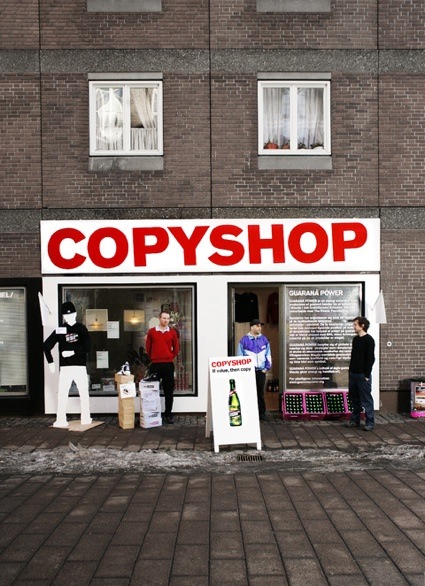 Superflex, Copyshop
Superflex, Copyshop
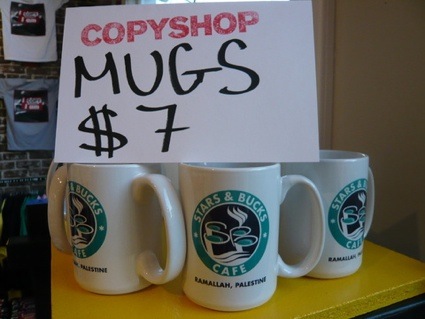 Superflex, Copyshop
Superflex, Copyshop
Superflex makes ‘Tools’, proposals that invite people to participate in and communicate the development of experimental models that alter the economic production conditions. These tools are developed for people to use, replicate and modify.
Their Copyshop worked as both a shop that sold products challenging intellectual property and as an information forum that investigate the phenomena of copying. The goods on sale were modified originals, improved copies, political anti-brands – or a Supercopy as the new original.
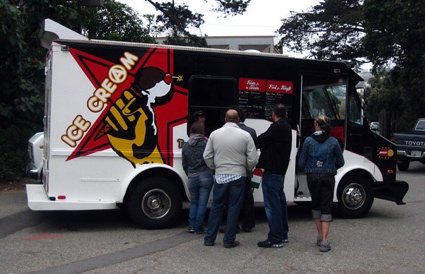 Center for Tactical Magic, The Tactical Ice Cream Unit, 2005
Center for Tactical Magic, The Tactical Ice Cream Unit, 2005
The Center for Tactical Magic is another favourite of mine. The group aims to engage communities into political thinking and acts of positive social transformation.
Their Tactical Ice Cream Unit is designed to operate and look like a police force’s mobile command center. On board are high-tech devices (including a video surveillance system, acoustic amplifiers, GPS, satellite internet, emergency gas masks, and a media transmission studio capable of disseminating live audio/video) and ice cream. It not only monitors police action at a demonstration but can also offer protection to protesters.The TICU operators also hand out free cones along with receive printed information developed by local progressive groups.
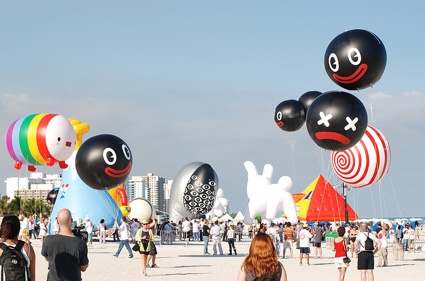 Friends With You Parade, Art Basel, 2006. Photo: Joel Mangrum
Friends With You Parade, Art Basel, 2006. Photo: Joel Mangrum
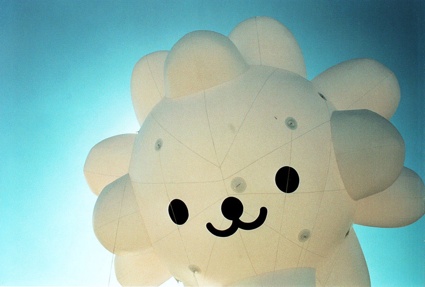 Friends With You Parade, Art Basel, 2006 (photo via flavorwire)
Friends With You Parade, Art Basel, 2006 (photo via flavorwire)
And now for something completely different…
FriendsWithYou make plush and wood toys, immersive (and often inflatable) art installations, sculpture and painting, playgrounds, and performance pieces that entertain the public.
FriendsWithYou opened the 2006 edition of Art Basel Miami with a Skywalkers parade staring balloons, ranging from 5 to 60 feet, to celebrate the solar system’s “formal acceptance into the universe.”
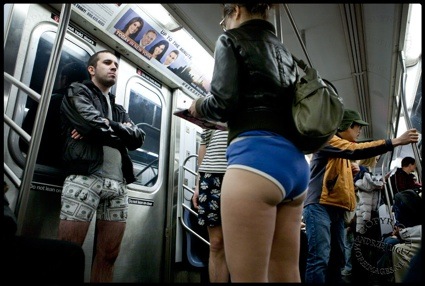 Improv Everywhere, the NYC No Pants Subway Ride, 2012. MOREimages: Andrzej Liguz
Improv Everywhere, the NYC No Pants Subway Ride, 2012. MOREimages: Andrzej Liguz
Improv Everywhere is at the origin of numerous pranks. The most famous of them is probably the No Pants Subway Ride. The first one took place on the NYc subway in 2002 with seven participants. The movement has since spread to countries around the world and is now a cultural phenomenon.
Paper Rad, P-UNIT-1 !!PART ONE!!
Beginning of the Paper Rad – Trash Talking DVD
Paper Rad makes comics, zines, video art, net art, MIDI files, paintings, installations, and music. Its style is called “Dogman 99”, a direct reference to Danish filmmaking movement Dogme 95. Paper Rad’s rules are: “No Wacom tablet, no scanning, pure RGB colors only, only fake tweening, and as many alpha tricks as possible”.
Paper Rad often recycles or appropriates sounds and images from all kinds of sources: old cartoons, commercials, late-night television, video games, etc.
Made in L.A. 2012- Welcome to Slanguage Studio
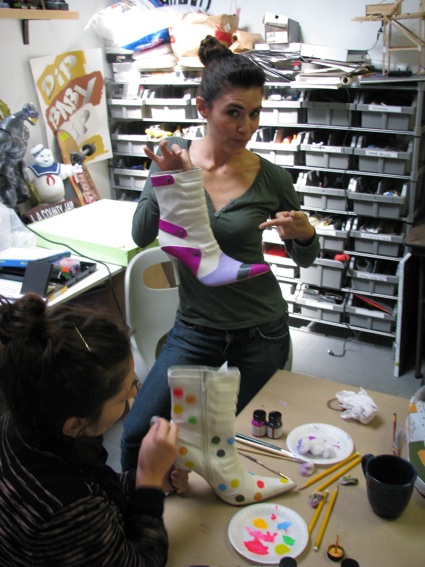 Custom Sneaker and Shoe Workshop, 2009
Custom Sneaker and Shoe Workshop, 2009
Founded by Karla Diaz and Mario Ybarra, Jr. in 2002, Slanguage uses art education and exhibition to discuss meaning and value of contemporary art in the community of in Wilmington, a harbor area of Los Angeles where they both grew up. Before it closed, Slanguage Studio had grown into a gallery, a site for workshops and events open to the local community, as well as an artist residency.
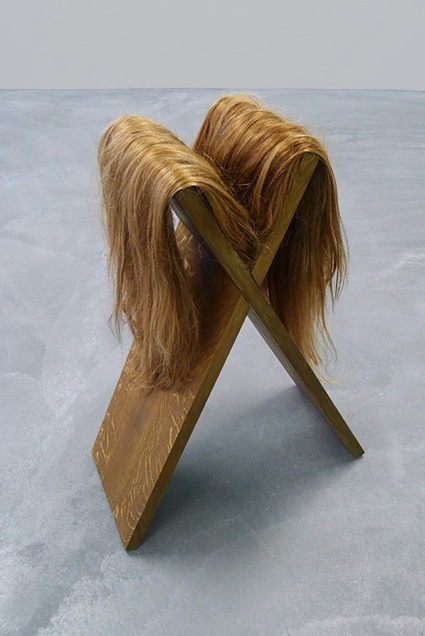 Zulf (brunette), 2014. Courtesy Kraupa-Tuskany Zeidler, Berlin
Zulf (brunette), 2014. Courtesy Kraupa-Tuskany Zeidler, Berlin
Slavs and Tatars has the best name ever and explores a shared sphere of influence between Slavs, Caucasians and Central Asians.

